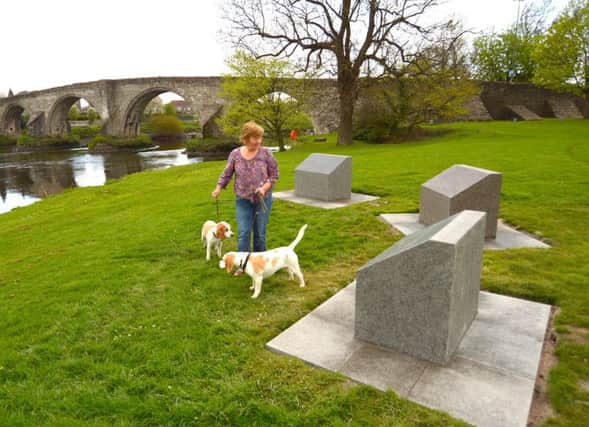Scotland’s forgotten hero Andrew de Moray honoured


Three granite plinths have been erected on the north side of the River Forth at Stirling, where fighting took place 718 years ago on 11 September 1297.
Moray was mortally wounded in the battle and Wallace became a national hero. Although the National Wallace Monument overlooks the site, it commemorates Wallace himself.
Advertisement
Hide AdUntil now there has been no monument to mark where the battle took place and nothing to promote the important role of “Scotland’s forgotten hero” Moray.
The plinths, which are inscribed with information about Moray, Wallace and the battle, will be officially unveiled in a ceremony next month.
Ted Christopher, of the Guardians of Scotland Trust, responsible for the memorial, said yesterday: “It’s been a long time coming – 718 years to be precise – but at long last the beginnings of a fitting permanent memorial are now in place at Stirling Bridge. Until now thousands of tourists have simply passed the site, with no idea of what went on there.
“This is also the first memorial to Andrew de Moray, who stood with Wallace at Stirling Bridge, but whose role has been forgotten by many. It’s important to put that right.”
The trust is now raising funds and seeking donations to help erect a major artwork depicting both Wallace and Moray on the site.
Mr Christopher added: “Our long-term goal remains to transform the whole site as a fitting memorial to one of the most important dates in Scotland’s history.”
Advertisement
Hide AdAfter the battle, the English leader, Hugh de Cressingham, was flayed and his skin cut into small pieces as tokens of the victory. Wallace is said to have used a strip to make a belt for his sword.
The remaining English fled to Berwick, leaving the garrison at Stirling Castle isolated and abandoning the Lowlands to the Scots.
Advertisement
Hide AdThe battle was a shattering defeat for the English and showed that infantry could be superior to cavalry.
Although Wallace is remembered as Scotland’s national hero, it was Moray who raised the standard to mark the start of the War for Independence in 1297.
Moray was responsible for leading the Northern Rising against the rule of King Edward I of England in the summer of that year.
He raised the standard at Ormond Castle, Avoch, overlooking the Moray Firth, and led an army to successfully regain control of the north for King John of Scotland.
In the late summer, Moray merged his forces with those of Wallace and jointly led the combined army to victory at the Battle of Stirling Bridge.
Moray died after the battle and is believed to have been buried in Fortrose Cathedral, near Avoch, although the site is not marked.
Wallace’s role saw him made Guardian of Scotland the following year, although he was defeated by King Edward himself at Falkirk in the summer of 1298.